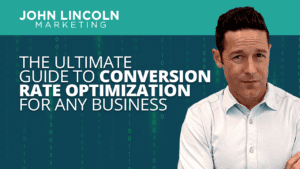What is Subliminal Advertising? Will It Work For You?
It’s happened to all of us. We’re watching our favorite show when, suddenly, we’re craving a hamburger and fries.
Are we really hungry or are we reacting to the recent McDonald’s commercial we saw?
What we’re experiencing when this happens is because of subliminal advertising. It probably happens to us more than we realize.
Let’s jump into what subliminal advertising is, whether it will work for you, and how to create effective subliminal messaging in advertising.
What is Subliminal Advertising?
Subliminal advertising is a type of impactful advertising that aims to connect with a consumer’s subconscious. It uses intentional messaging, graphics, and sounds to pass a message from the advertiser to the consumer without their awareness of it.
It has been used as an effective way to get your message across without appearing pushy or salesy. It aims to influence without overpowering.
There are three main types of subliminal advertising:
- Backmasking: This is when a voice recording is played backward over the airwaves of an audio recording. This type of backward messaging makes the brain work harder to decode the message.
- Sub-audible messaging: This type of messaging is when a message gets inserted into a different audio recording at a lower volume. These messages are too low to hear with a naked ear but loud enough for the listener’s brain to register and decode the message. It leaves the producer’s message with the listener without the listener ever being aware that they heard it.
- Sub-visual messaging: This type of messaging uses subtle cues in visual graphics. Things like a hidden visual inside of a larger logo or a smaller image hidden in a larger image are examples of sub-visual messaging. These images are too small for the viewer’s eyes to register when quickly scanning the larger image. They are big enough that the brain knows to store the information for later use.
These varying types of messages make it possible for subliminal advertising to be used in all types of advertising including print, radio, TV, and social media.
Does it Work?
There has been a lot of discussion around subliminal advertising. Some say it doesn’t work but we’ve seen information absolutely does! Do you think global brands like Amazon and Coca-Cola would use it if they didn’t?
Our subconscious is always working and always feeding us messages. If there is a way to make a company’s product a topic of one of those messages, advertisers are definitely going to find a way to take advantage of it.
However, it’s important not to misconstrue subliminal advertising with manipulation.
The goal of this type of advertising is to leave the consumer with a message to digest later. By doing this, they keep thinking about the product long after being exposed to the advertisement. The goal is not to manipulate the consumer into feeling like they need it if they don’t.
Building a relationship of trust is one of the most important things a company can do with its consumers. Think of subliminal advertising as another way to do this and connect with an audience. Don’t do anything that could jeopardize the relationship with the consumer.
While planning a campaign using subliminal advertising, it is also very important to check the advertising laws in the state or country where this advertisement will be featured.
There can be a very fine legal line between what is considered ethical and what is not. It is important to ensure the advertisement doesn’t land the company in legal trouble.
This topic has been explored in quite a few legal cases in the United States but the answer to the legality is still unclear.
In Central Hudson Gas & Electric v. Public Service Common of New York, the US Supreme Court found that the copy in an advertisement cannot be misleading if it is expected to be protected by the First Amendment.
In a lower-level court, a Nevada judge ruled in Vance v. Judas Priest that, regardless of the intent of these types of advertisements, they aren’t covered by the First Amendment. This ruling could potentially open a company up for lawsuits or other legal issues if someone takes offense to their advertisement.
Because of these conflicting cases, if you are creating a campaign using subliminal advertising and you’re questioning the legality of it, it’s best to consult an attorney or your company’s legal department before approving the campaign.
How to Create Effective Subliminal Messaging in Advertising
The first step to creating effective subliminal messaging in advertising is to be subtle!
The whole point of this type of messaging is to influence without overwhelming. You can’t subtly influence if you’re in your viewer’s face with your message.
You also don’t want to do anything that might break your consumers’ trust in you. Promote your product but not in a manipulative way.
The goal of subliminal advertising is to be clever. Keep people talking about the product long after they were exposed to the advertisement for it.
Effective Subliminal Advertising Examples
When you start to think about adding subliminal advertising to your marketing strategy, don’t overthink it. A simple-looking graphic can leave a big impression.
Here are some effective subliminal advertising examples:
1. Amazon

Everyone knows and recognizes this global brand’s logo. But have you ever noticed that the arrow at the bottom points from the A to the Z? This was intentional.
By pointing the arrow from A to Z, Amazon is saying that a consumer can turn to Amazon, no matter what they need. Everything is covered — from A to Z.
2. Baskin Robbins

What makes Baskin Robbins different from every other ice cream shop?
The fact that they are famous for having 31 flavors! Making 31 stand out from the BR in this logo is an excellent form of subliminal advertising. It’s stating their name while also reminding the viewer of the thing that makes them famous.
3. Tostitos

Tostitos famous tag line is “bring the party”. What a lot of people don’t notice is that there is a little party directly inside of their logo.
Look closely at the middle of the logo and you’ll see two friends sharing chips and salsa. Its goal is to make the consumer want to have a party and bring the chips!
This is a great example of quality marketing.
4. Milwaukee Brewers

This logo is just an image of a baseball glove, right?
Wrong! Look closely and you’ll see the fingers at the top make an M and the rest of the glove form a lower case B.
This was a pretty clever way to incorporate the team’s initials into their logo. It doesn’t look like the advertising team was trying too hard.
Subliminal Advertising Examples That Are Just Not Working
No matter how hard some advertisers try, some messages just don’t hit the mark.
Sometimes it’s just too obvious. Sometimes, the hidden messages are just unnecessary.
Here are some subliminal advertising messages that we’ve could have done without.
1. KFC
This commercial was so bad that it’s almost comical.
The subliminal message here is that small-dollar bill in the lettuce of the sandwich.
The idea behind it is that the consumer will get this delicious sandwich for less than a dollar. The photoshopping here is sloppy, which makes the message way too obvious.
2. Burger King
Well, they tried but this advertisement is not at all subliminal. In fact, it’s the farthest thing from subtle.
Between the graphics, the ad copy, and the actual name of the sandwich, we’re shaking our heads at this advertisement.
The sexual innuendos here are so blatantly obvious that it just comes off as a tacky way to sell a sandwich. Using this copy with this imagery to attempt to sell something that has nothing to do with sex is cringey.
3. Candies
Like most of Candies’ early 2000s advertisements, this one featuring pop music star Mark McGrath is pretty bad — almost as bad as the Burger King ad above.
Again, the sexual innuendo of the placement of the rocket on the computer screen is just so blatantly obvious — and unnecessary in an advertisement for fragrance.
The idea behind this subliminal advertisement was to be clever and witty but it just comes across as sort of vulgar.
Wrapping Up with Subliminal Advertising
Now that you know the basics of what works, and what doesn’t, in subliminal advertising, it’s up to you to decide if this type of advertising will work for you.
Ask yourself what you want to convey in your advertising. Do you want your message clear and obvious or do you want to plant seeds in your consumer’s subconscious?
If you need some help designing your subliminal advertising, you can always reach out to a professional creative agency for some professional assistance.
Whatever you do, if you do decide to try subliminal advertising in your next campaign, make sure you’re being subtle and clever.
Subliminal Advertising FAQs
1. What is subliminal advertising?
Subliminal advertising is a way to use content, copy, and graphics in a very intentional and creative way to appeal to a consumer’s subconscious. It aims to influence without overwhelming.
2. Does subliminal advertising work?
The general consensus varies but this type of advertising is not new. It’s also well-known that our subconscious is constantly working and taking in messages from the environment around us. It is very likely that some of these messages come from the advertisements that we see.
3. Is subliminal advertising legal?
There have been some conflicting court cases that could provide varying answers to this question.
In business in general, if you’re questioning the legality of something, it’s best practice to consult a licensed attorney.
4. What should an advertiser focus on when creating subliminal advertising?
Be subtle! The whole point of this type of advertising is not to overwhelm your consumer. You want your advertisement to be witty and clever, not tacky or unintentionally comical.
Welcome To John Lincoln Marketing
Welcome to John Lincoln’s personal website. You can learn about John Lincoln’s books, films, book him to speak and contact him. John is directly associated with many of the businesses mentioned on this website and freely discloses this information.
About the Author

John Lincoln is CEO of Ignite Visibility, one of the top digital marketing agencies in the nation. Ignite Visibility is a 6x Inc. 5,000 company. Ignite Visibility offers a unique digital marketing program tied directly to ROI with a focus on using SEO, social media, paid media, CRO, email and PR to achieve results. Outside of Ignite Visibility, Lincoln is a frequent speaker and author of the books Advolution, Digital Influencer and The Forecaster Method. Lincoln is consistently named one of the top digital marketers in the industry and was the recipient of the coveted Search Engine Land “Search Marketer of The Year” award. Lincoln has taught digital marketing and Web Analytics at the University of California San Diego since 2010, has been named as one of San Diego’s most admired CEO’s and a top business leader under 40. Lincoln has also made “SEO: The Movie” and “Social Media Marketing: The Movie.” His business mission is to help others through digital marketing.
Get Social
Contact John Lincoln
Want to get in touch with John Lincoln? Click Here To Reach Out.
Related Posts

Top 16 Questions to Ask a PPC Company in 2024
In 2024, choosing the right PPC company is not just about spending your advertising budget. You want to make every cent count towards your business

The Ultimate Guide to Conversion Rate Optimization for Any Business
Whether you’re a seasoned marketer or just starting out, conversion rate optimization (CRO) is a powerful tool that can boost your sales, leads, and overall

16 Questions to Help You Choose an SEO Company
Feeling overwhelmed by the sea of SEO companies out there? You’re not alone! Choosing the right partner is crucial for achieving your online marketing




